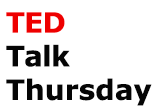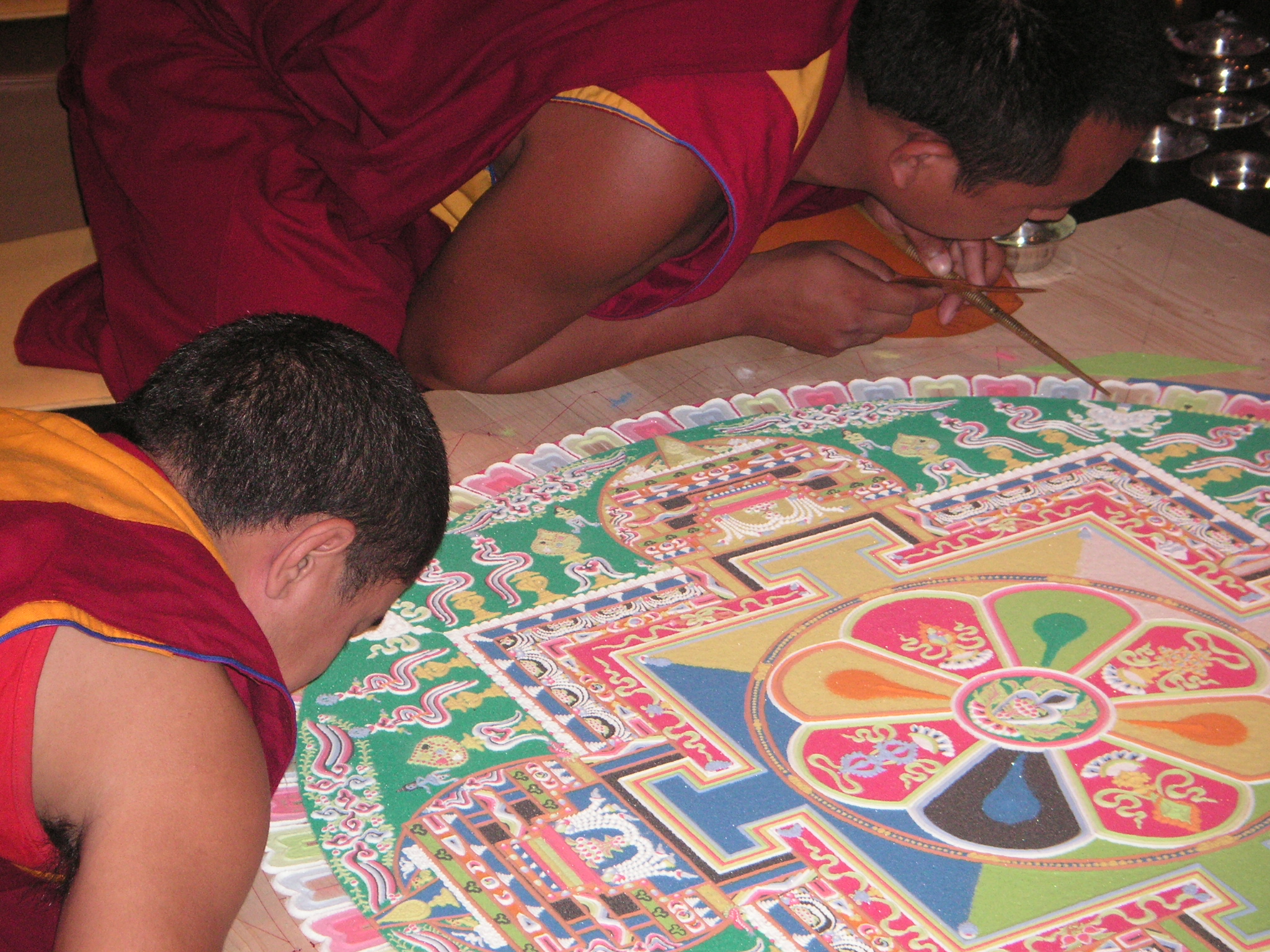by atmara | Nov 3, 2016 | Art, Healing, Inspiration, Painting, TED Talks, Video
 According to TED.com: “Painter Alyssa Monks finds beauty and inspiration in the unknown, the unpredictable and even the awful. In a poetic, intimate talk, she describes the interaction of life, paint and canvas through her development as an artist, and as a human.”
According to TED.com: “Painter Alyssa Monks finds beauty and inspiration in the unknown, the unpredictable and even the awful. In a poetic, intimate talk, she describes the interaction of life, paint and canvas through her development as an artist, and as a human.”
“Alyssa Monks blurs the line between abstraction and realism through layering different spaces and moments in her paintings. Using semi-transparent filters of glass, vinyl, steam and water to flip background and foreground in her 10-year water series, she seduced the viewer into shallow spaces. Today, she is imposing a transparent landscape of infinite space over her emotionally evocative subjects.”
“The tension in her mostly large-scale paintings is sustained not only by the composition but also by the surface treatment itself. Each brushstroke is thickly applied oil paint, like a fossil recording every gesture and decision, expressing the energetic and empathic experience of the handmade object.”
Enjoy.
Alyssa Monks: How loss helped one artist find beauty in imperfection
For those of you not familiar with TED Talks here is a brief summery from www.ted.com: “TED is a small nonprofit devoted to Ideas Worth Spreading. It started out (in 1984) as a conference bringing together people from three worlds: Technology, Entertainment, Design. Since then its scope has become ever broader. Along with two annual conferences — the TED Conference in Long Beach and Palm Springs each spring, and the TEDGlobal conference in Oxford UK each summer — TED includes the award-winning TEDTalks video site, the Open Translation Project and Open TV Project, the inspiring TED Fellows and TEDx programs, and the annual TED Prize”
——————————————————————————————————–
I look forward to your thoughts and comments!
Like this:
Like Loading...
by atmara | May 14, 2015 | Art, Creativity, TED Talks, Video
 According to TED.com: “With endearing honesty and vulnerability, Raghava KK tells the colorful tale of how art has taken his life to new places, and how life experiences in turn have driven his multiple reincarnations as an artist — from cartoonist to painter, media darling to social outcast, and son to father.”
According to TED.com: “With endearing honesty and vulnerability, Raghava KK tells the colorful tale of how art has taken his life to new places, and how life experiences in turn have driven his multiple reincarnations as an artist — from cartoonist to painter, media darling to social outcast, and son to father.”
“Raghava KK began his career in art as a newspaper cartoonist, and the cartoonist’s bold line — and dead-on eye for truth — still powers his art. His work spans painting, sculpture, installation, film and iPad art, always linked by his challenging opinions on identity, conformity, gender, celebrity, ceremony. (He even views his lavish Indian wedding as a piece of performance art.)”
Enjoy this interesting life journey.
For those of you not familiar with TED Talks here is a brief summery from www.ted.com: “TED is a small nonprofit devoted to Ideas Worth Spreading. It started out (in 1984) as a conference bringing together people from three worlds: Technology, Entertainment, Design. Since then its scope has become ever broader. Along with two annual conferences — the TED Conference in Long Beach and Palm Springs each spring, and the TEDGlobal conference in Oxford UK each summer — TED includes the award-winning TEDTalks video site, the Open Translation Project and Open TV Project, the inspiring TED Fellows and TEDx programs, and the annual TED Prize”
——————————————————————————————————–
I look forward to your thoughts and comments!
Like this:
Like Loading...
by atmara | Feb 6, 2012 | Art, Mandala Monday, Mandalas

Can you imagine spending several hours, days, or even weeks on a work of art, and then destroying it? The idea of creating something only to wipe it out when you’re finished is illogical and counterproductive to many people in the Western world. But in some cultures, this is a common procedure, and one that serves a deeper purpose than meets the eye.
Sand painting is the perfect example of ephemeral art – that is, art that is meant to be temporary. To create a sand painting, colored sand is poured carefully into predetermined patterns. Sand painting is a common practice amongst many diverse indigenous cultures from around the world, including the Australian Aborigines, the Native Americans, and the Tibetans, as shown above. Tibetan sand painting is a perfect example of making art that values ‘process’ over ‘product’. In the Western world, it’s often the opposite – artists labor over paintings for the purpose of selling them for profit. The art, even though it may be a labor of love, is also a ‘product’. The ‘process’ of making art is treated as a means to an end. In Tibetan sand painting, the process of creating the intricate sand mandalas is far more important than the final product. Tibetan sand paintings are created by Buddhist monks for ritual purposes related to healing and blessing. As the sand mandalas are painstakingly created, viewers are often allowed to watch and admire the precision of the artists and the beauty of the design. Destroying the finished sand mandalas contains a ritual purpose as well; it is a lesson on impermanence. Perhaps artists from Western cultures can benefit from some of these ideas by paying closer attention to the process of making art, rather than worrying about how the final product will turn out.
Article Source: http://www.articlesbase.com/art-articles/the-art-of-tibetan-sand-painting-4297166.html
About the Author
Mark Feldman is President of SegTech, a company devoted to a wonderful Image Segmentation technology called Segmation. Segmation – The Art of Pieceful Imaging
Paint-by-numbers meets modern technology in SegPlay® PC, a computerized paint-by-numbers program for Windows 7, Vista, XP and 2000. With twenty built in images and powerful features for artsy types and casual gamers, SegPlay® PC is simple to use with infinite variety.
There are also hundreds of available add-on patterns for SegPlay® PC organized in over 100 categories from famous historical artists to colorful illustrations to natural photographic scenery.
Play online for free!
Visit our website: http://www.segmation.com
Read our blog: http://segmation.wordpress.com
Join us on Facebook: http://www.facebook.com/segmation
——————————————————————————————————–
I look forward to your thoughts and comments!
Be sure to Subscribe to this blog either by RSS or Email via the forms on the top right column of the page.
Like this:
Like Loading...
 According to TED.com: “Painter Alyssa Monks finds beauty and inspiration in the unknown, the unpredictable and even the awful. In a poetic, intimate talk, she describes the interaction of life, paint and canvas through her development as an artist, and as a human.”
According to TED.com: “Painter Alyssa Monks finds beauty and inspiration in the unknown, the unpredictable and even the awful. In a poetic, intimate talk, she describes the interaction of life, paint and canvas through her development as an artist, and as a human.”
